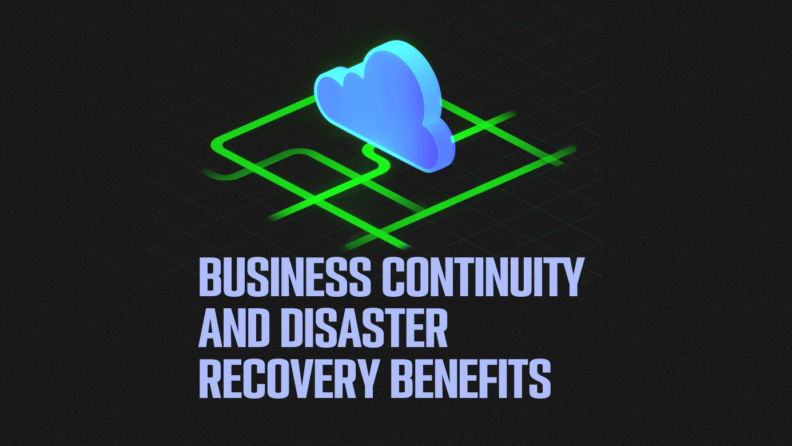Best of Both Worlds: A hybrid cloud environment combines the security of private clouds with the scalability and resources of public clouds, offering a flexible and efficient computing solution.
Seamless Workload Management: Hybrid clouds provide a unified platform to manage workloads across various environments, ensuring smoother operations and greater flexibility in resource utilization.
Can't Ignore the Perks: The advantages of hybrid cloud systems, such as enhanced security, flexibility, and scalability, make them an attractive choice for businesses aiming for efficient computing solutions.
A hybrid cloud environment seamlessly manages workloads across diverse computing environments, often combining a private (on-premise) cloud with a public (off-premise) cloud. And the benefits are too good to ignore — 92% of organizations are rocking a multi-cloud strategy or have one underway. Talk about a tech revolution!
The advantages of hybrid cloud computing are manifold — including game-changing features for infrastructure scaling, agile development, and cost optimization.
In this article, I will explain hybrid cloud, how it works, and what benefits it can bring to your organization.
What is a Hybrid Cloud?
A hybrid cloud, including hybrid cloud storage, combines different computing resources, storage capacities, and services from different places. These places can include public clouds that you access over the internet, private clouds that are dedicated to your organization, and on-premises data centers that are located within your own office.
The point of hybrid cloud management is to combine the benefits of each type of system and make them work smoothly together. This combination gives organizations powerful tools that ultimately work to serve their business ends better.
-

ManageEngine OPM Plus
Visit WebsiteThis is an aggregated rating for this tool including ratings from Crozdesk users and ratings from other sites.4.2 -

Site24x7
Visit WebsiteThis is an aggregated rating for this tool including ratings from Crozdesk users and ratings from other sites.4.6 -

Oracle Cloud
Visit Website
6 Benefits of Hybrid Cloud
Let’s explore in detail the range of benefits hybrid clouds offer compared to other solutions.
1. Scalability
The scalability of a hybrid cloud refers to the ability of the infrastructure to quickly and efficiently adapt to fluctuations in demand. This dynamic nature of the cloud ensures that the organization can scale its resources up or down, depending on real-time needs.
Scalability comes in particular from the addition of public cloud providers to your network, as they make it easy to add or subtract assets such as storage and compute power in a near-real-time, on-demand basis.
The two primary aspects of scalability within a hybrid cloud environment are:
Horizontal Scalability
Horizontal scalability involves adding or removing resources (servers, storage, or computing power) to the infrastructure, typically by deploying more instances of virtual machines or containers.
This process enables the system to handle increased traffic, workloads, or storage requirements without compromising performance or incurring downtime.
Vertical Scalability
Vertical scalability, on the other hand, involves upgrading the existing resources within the infrastructure. This could mean increasing individual servers' or virtual machines' processing power, memory, or storage capacity.
Vertical scalability is essential for accommodating resource-intensive applications or database management systems that require more significant processing power.
2. Cost Optimization
A hybrid cloud isn't just about business continuity and disaster recovery — it can also be a game-changer when optimizing costs. Here are some ways it can help:
Efficient Resource Usage and Cost Reduction
Because a hybrid cloud offers the flexibility to allocate and deallocate resources based on your changing needs, it’s easier to match resources more closely to actual usage.
This prevents you from overprovisioning, which tends to happen in on-prem data centers, as they must be designed to handle peak capacity and future demand. However, having more resources than you need at a given time can result in underutilizing resources and wasted spending. On the other hand, having too few resources can result in poor performance.
Automation and orchestration tools can help you optimize resource usage by effectively monitoring and managing your hybrid cloud infrastructure.
Pay-As-You-Go Pricing Models
Many cloud service providers offer attractive financial advantages through pay-as-you-go pricing models. This means you only pay for the resources you use and only for the time you use them without any upfront or fixed costs.
Depending on your budget and requirements, you can choose from various pricing options, such as on-demand, reserved, or spot instances. By embracing this model, businesses can:
- Reduce capital expenditure (CapEx)
- Optimize resource usage
- Lower operational expenditure (OpEx)
- Effectively manage their cash flow
Take the example of BP, one of the world's leading energy companies. Since 2017, BP has been employing Azure as its strategic hybrid cloud platform. They've migrated numerous applications and workloads to the public cloud while maintaining some on their private cloud.
The result? BP has successfully reduced its IT costs by up to 40% while simultaneously enhancing its agility, scalability, and security.
3. Agility
The hybrid cloud supports agile development by offering the perfect playground for developers to experiment, innovate, and iterate rapidly. The flexible hybrid infrastructure lets you quickly spin up development and testing environments, allowing you to fail fast, learn from your mistakes, and evolve your solutions dynamically.
The hybrid cloud offers the ideal conditions for continuous integration and deployment (CI/CD) pipelines, enabling more rapid releases and integration of new features.
Infrastructure as Code (IaC) allows you to create consistent reproducible environments with automated provisioning and management of resources. This reduces manual intervention, minimizing human errors and streamlining repetitive tasks. It frees up valuable time and resources to redirect toward innovation and strategic initiatives.
As a result of this culture of agility and the enabling capabilities of the hybrid cloud, development teams can focus on creating value for customers faster and more efficiently. Shorter development cycles mean you can respond rapidly to market demands, staying ahead of competitors with innovative products and features.
4. Improved Performance and Latency
Another key benefit of hybrid cloud infrastructure is the improvement in performance. These benefits come from easy access to critical applications and data, as well as better distribution of workload across cloud environments.
Through strategic management of hybrid cloud resources, organizations can deploy latency-sensitive applications closer to end users or data sources.
This can be achieved through direct connectivity (such as AWS Direct Connect or Azure ExpressRoute), which establishes a faster, less complex connection between private and public clouds. Dedicated connectivity ensures efficient data transfer between two sites, reducing any delay caused by network congestion.
The hybrid cloud model also facilitates edge computing and distributed cloud architectures. This approach leverages localized data processing and storage capabilities, enabling real-time data analysis and immediate responses to user requests. Deploying applications at the edge of the network, closer to end users or data sources, dramatically reduces latency, improving overall user experience and application performance.
5. Business Continuity and Disaster Recovery
One of the benefits of a hybrid cloud is that it can enhance business continuity and disaster recovery (BCDR) capabilities. BCDR encompasses proactive measures taken to ensure data protection. Built-in redundancy in your hybrid cloud infrastructure can give you the ability to recover in the event of adverse incidents such as natural disasters, cyberattacks, or human errors.
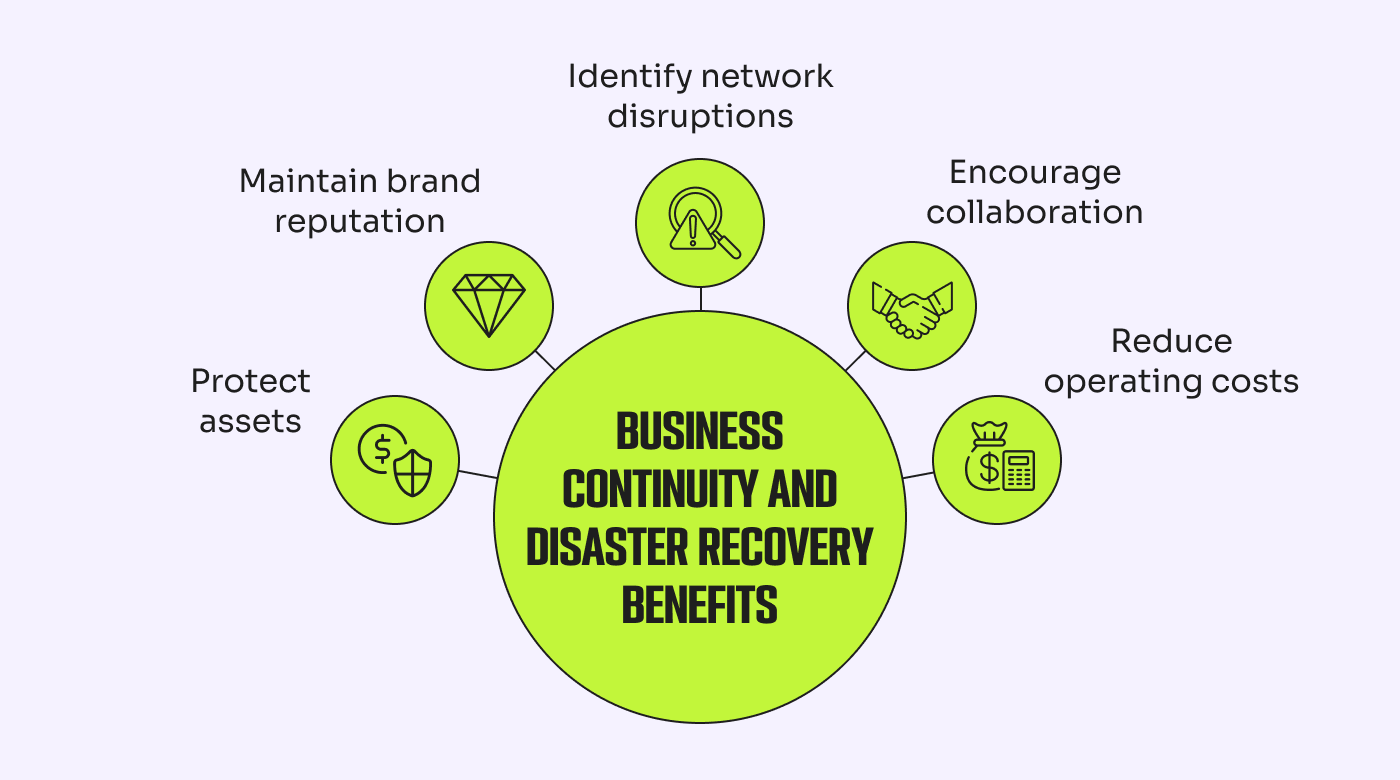
Research shows that the benefits associated with hybrid clouds under BCDR reduce costs by up to 50% compared to traditional methods.
A few ways the hybrid cloud makes BCDR better include:
- Adding redundancy and failover capabilities. So, if one part of the system fails, another part can step in and keep things running smoothly. That way, your applications and services stay available and perform well even when things get rough.
- Automation of backup and disaster recovery processes. That means if there's a disruption, your data and systems can be quickly and easily restored without needing someone to step in and do it manually or follow complicated steps.
This is great news for companies because they can better prepare for disruptions, protect their assets, and save money on operations.
6. Enhanced Security and Compliance
In a hybrid cloud infrastructure, businesses have complete control over where data is located and how it is managed. Businesses can apply different security and compliance controls across different assets and network locations, and data can be segregated based on sensitivity level.
This granular control allows organizations to manage their data according to its relevance and required level of confidentiality, which is crucial for effectively handling sensitive customer data, financial records, or valuable intellectual property.
For example, it might make sense for your organization to keep certain data more readily available in a public cloud while keeping selected sensitive records in on-premise servers that have already been vetted to meet your industry’s compliance requirements.
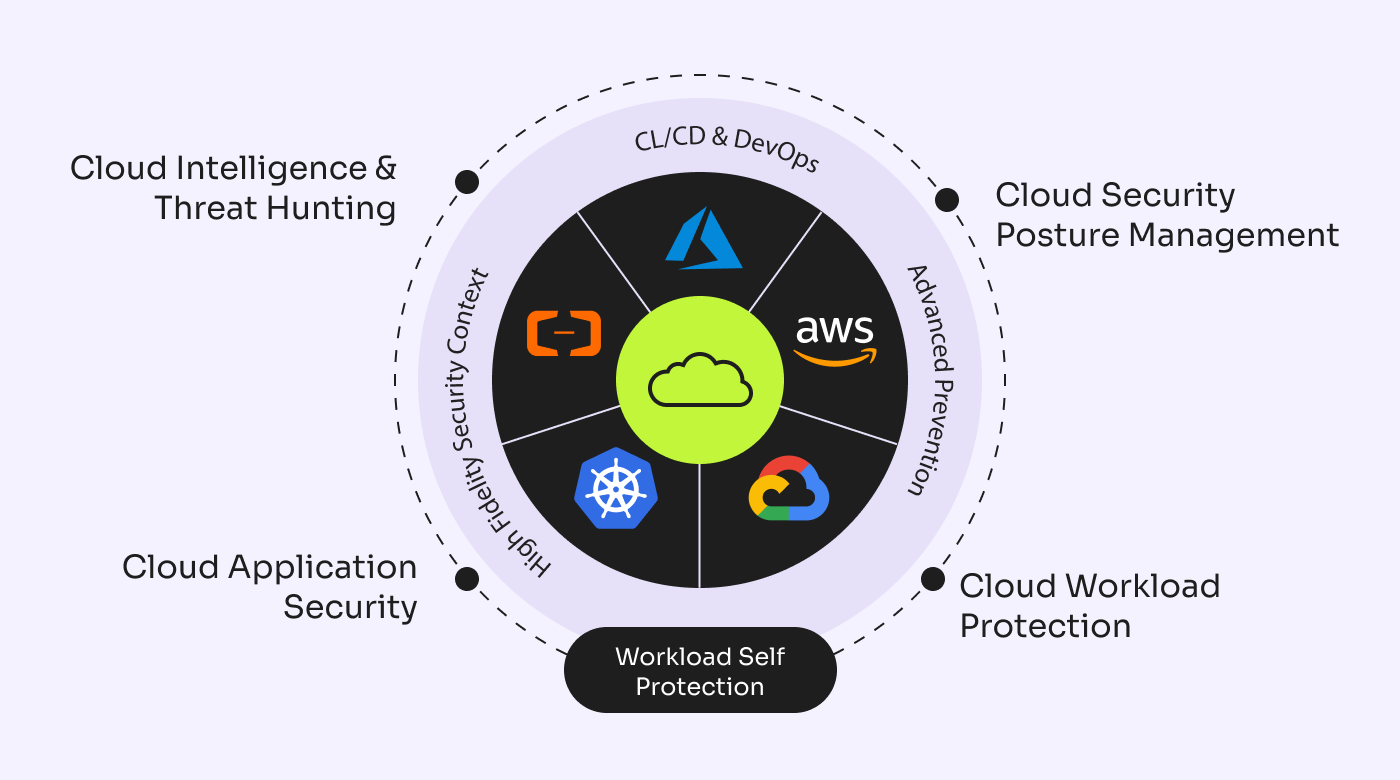
Data encryption and secure communication channels also play a vital role in hybrid cloud security architectures. Advanced cryptographic methods can be used to ensure the confidentiality of data during transmission and at rest.
Secure access methods, such as encrypted virtual networks and private connections, defend against unauthorized access.
Data Analytics and Insights
The hybrid cloud is excellent for connecting different datasets, which helps businesses see the big picture of their operations and customers. A holistic view of your operations lets you make smarter decisions and have an edge over competitors.
Hybrid cloud infrastructures also offer powerful capacities for real-time analytics. This can prove pivotal in business decision-making. Data today is flowing at such a fast pace that timely responses to offer differentiated products are mandatory for maintaining a flagship position.
The analytics and insights available in the hybrid cloud can help organizations respond swiftly to changes in market scenarios and fine-tune their strategies accordingly.
For example, the multinational investment firm Deutsche Bank began using a hybrid cloud technology for analyzing data to gain actionable insights from their data. This led to smarter business decisions, optimized services, and enhanced customer experiences.
What Are the Components of a Hybrid Cloud?
A hybrid cloud combines private cloud, public cloud, and on-premises infrastructure, offering the best of all worlds.
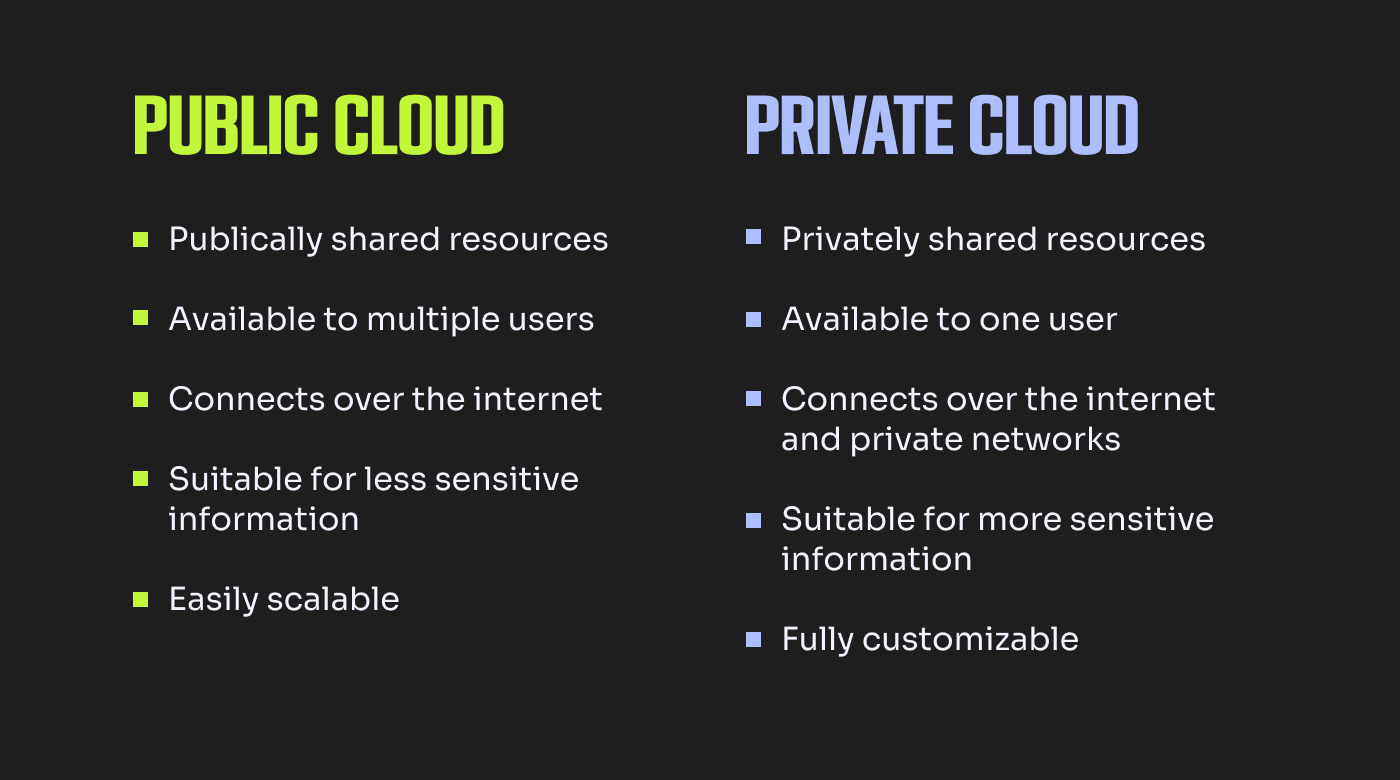
It leverages the strengths of each component, allowing businesses to benefit from the scalability and cost-efficiency of public clouds while maintaining granular control over infrastructure configuration and sensitive data protections in private environments.
Private Cloud Infrastructure
Private cloud infrastructure is a cloud computing setup designed exclusively for a single organization. It guarantees that only the organization can access its resources, providing heightened security, privacy, and customization options.
Like other cloud environments, private clouds rely on technologies like virtualization, automation, and self-service portals. However, unlike public clouds shared by multiple customers, private clouds are isolated and under the organization's control.
Private cloud infrastructure can be implemented on-premises in the organization's data center or off-premises through rented or leased facilities. The organization can choose to manage the infrastructure itself or delegate management tasks to a service provider.
The benefits of private cloud infrastructure include:
- Compliance with regulatory requirements for sensitive data
- Better performance and availability due to resource exclusivity
- The ability to tailor the setup to the organization's specific needs
Challenges include higher costs and complexity compared to public clouds, as well as limited scalability and elasticity, requiring careful provisioning for peak demand.
Public Cloud Infrastructures
Public cloud infrastructures are cloud computing environments provided by third-party service providers via the Internet.
These shared environments serve multiple organizations and individuals, offering various services like software applications, virtual machines, and development platforms. Users can access these services for free or by paying based on usage, while the provider manages data centers, hardware, and network connectivity.
They operate through different service models:
- Infrastructure-as-a-Service (IaaS):
Users can access essential computing, networking, and storage resources on demand. They have the flexibility to create and run their virtual machines and applications on the provider's infrastructure.
Examples include Amazon Web Services, Microsoft Azure, Google Compute Platform, and IBM Cloud.
Users gain access to development environments equipped with tools, libraries, and frameworks for creating and deploying cloud-based applications.
This allows users to focus on their code without the need to manage the underlying infrastructure or platform. Providers like Google App Engine, IBM Cloud Foundry, Microsoft Azure App Service, and Heroku offer PaaS solutions.
- Software-as-a-Service (SaaS):
Ready-to-use software applications are available in the cloud and accessible through web browsers or mobile apps. Users can enjoy the functionality and features without installation or maintenance hassles.
Examples include Google Workspace, Microsoft Office 365, Salesforce, and Zoom.
Public cloud infrastructures bring numerous benefits, such as scalability and access to innovative technologies. However, it brings challenges such as increased system complexity and greater potential attack surface. This can mean a more significant workload and learning curve to mitigate security risks, data privacy concerns, compliance issues, and regulatory requirements.
On-Premises Infrastructures
On-premises infrastructures are IT infrastructures kept on-site at a company's location. This means the company owns and manages the hardware, software, and network resources supporting its IT operations. The company can either administer the on-premises infrastructure or hire a third-party service provider.
Many companies retain some on-prem systems in place, even as they move other operations into the cloud.
Some of the benefits of on-premises infrastructure are:
- Cost advantage. For applications that do not benefit from cloud hosting, it may make more sense to use your existing infrastructure rather than pay for something new.
- Compliance and regulatory adherence. Maintaining your mandated security posture may be simpler in on-site infrastructure that is familiar and already certified. Companies may also need to keep data on site per the data sovereignty regulations of certain regions and industries.
- Customization. A company can flexibly tailor the infrastructure it owns to meet specific needs and preferences and can use any software or hardware it wants.
Some of the challenges of on-premises infrastructure are:
- They require more capital and operational expenses, as the company has to invest in and maintain the hardware and software resources.
- They require more technical expertise and staff, as the company has to manage and update the infrastructure.
Hybrid Cloud Security
Maintaining security in a hybrid cloud can be a more complex operation than security legacy networks, because it involves safeguarding your information, programs, and systems across an increasingly diverse body of distributed components.
Hybrid Cloud Security Components
Some of the essential components of hybrid cloud security include:
Physical Security
To ensure the safety of the on-premise components of your hybrid cloud, you can employ physical security mechanisms such as locks, guards, cameras, and even biometrics, all capable of regulating access to servers, networks, and storage systems.
For public cloud services, look for a provider who is reputable and qualified to handle physical security for you. They should maintain high-security standards and strictly abide by protocols that prevent unauthorized access, theft, and damage to the equipment that hosts your services.
Technical Security
Technical security measures are used to help prevent harmful cyberattacks, data breaches, and malware infection, among other threats that might compromise vital aspects such as confidentiality, integrity, and resource availability. Cloud security tools such as firewalls, anti-malware protection, and continuous automated monitoring can be deployed toward these ends.
Administrative Security
Administrative security guarantees systematic functioning by enforcing policies and rules. It involves routine monitoring of compliance and governance practices, along with consistent checks and audits on hybrid cloud security status.
3 Hybrid Cloud Security Challenges
You should know that a hybrid cloud can come with additional security challenges. Compared to entirely on-premise networks, hybrid cloud infrastructures have a larger potential attack surface, whose contours are constantly changing. And because cloud infrastructures are complex, flexible, and elastic, legacy network security tools are generally not up to the task of securing modern hybrid networks.
Look for a cloud-native security tool that can provide visibility, protection, and security controls throughout your network, including public and private components.
Here are some cloud security challenges to be aware of, including causes, impacts, and examples.
1. Data Breaches
Unauthorized access or theft can result because of intentional attacks or human mistakes that lead to the exposure of sensitive data. The complexity of cloud infrastructure may create additional opportunities for oversights or misconfigurations, so it’s important to harden your security posture and use robust cloud-native security tools.
Data breaches can result in financial losses, legal consequences, harm to reputation, or loss of customers. To illustrate, in 2019, Capital One experienced a data breach that impacted more than 100 million individuals who were customers or applicants with their information stored in AWS.
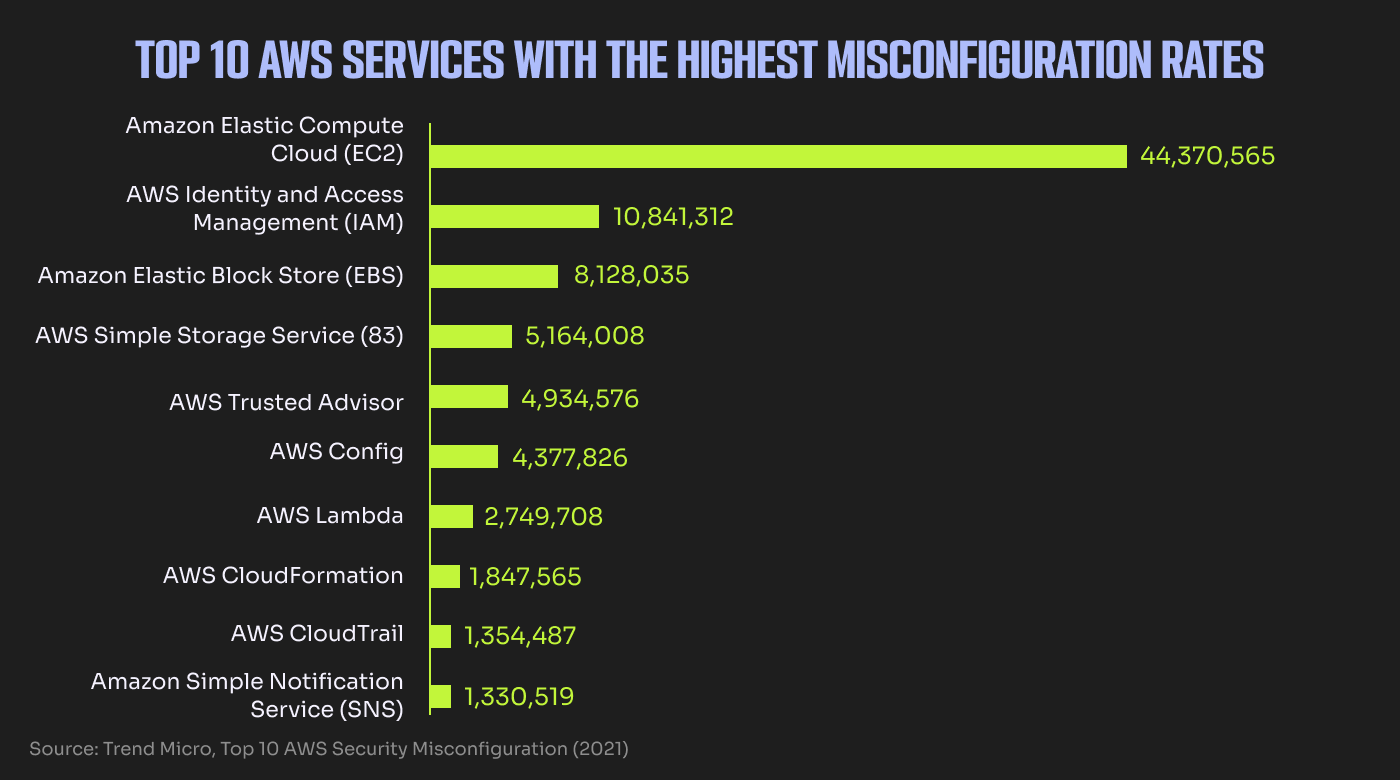
2. Compliance Issues
Compliance applies to cloud infrastructures in adhering to industry regulations, legal requirements, and data protection standards.
While hybrid infrastructure is more adaptable in the face of changing compliance requirements due to its scalability and flexibility, there are still quite a few compliance challenges caused by hybrid cloud environments, including:
- Data sovereignty: Compliance mandates often require data to remain within specific geographic borders, making managing data across various cloud providers and on-premises locations challenging.
- Visibility and control: Monitoring and ensuring compliance across hybrid cloud environments can be complex, as data and applications are distributed across diverse platforms and services.
- Multi-cloud complexity: Using multiple cloud providers can lead to varying compliance standards, making it difficult to implement consistent security measures and demonstrate compliance uniformly.
- Identity and Access Management (IAM): Maintaining a unified approach to identity and access management becomes intricate, especially when integrating cloud-based and on-premises systems.
3. Vendor Risks
Hybrid cloud security also includes the potential for vendor-based risks. While most public cloud providers have extremely good reputations for security, they can make a mistake, and you should be aware that you are choosing to outsource some of your security control to a 3rd party.
You should also know that hybrid cloud security is a shared responsibility. Don’t assume that Google or AWS will handle everything. Customers are typically responsible for securing application layers, while providers secure their own infrastructure.
-

Rippling IT
Visit WebsiteThis is an aggregated rating for this tool including ratings from Crozdesk users and ratings from other sites.4.8 -

Zygon
Visit WebsiteThis is an aggregated rating for this tool including ratings from Crozdesk users and ratings from other sites.4.9 -

ManageEngine Log360
Visit WebsiteThis is an aggregated rating for this tool including ratings from Crozdesk users and ratings from other sites.4.2
Hybrid Cloud Security Best Practices
Implementing best practices in your hybrid cloud will help you protect sensitive data, ensure compliance with regulations, and enhance overall security.
The two primary best practices in hybrid cloud security are encryption and segmentation.
Encryption
It plays a vital role in safeguarding data in transit and at rest. It offers multiple benefits, including confidentiality, data integrity, and compliance.
By encrypting data, organizations add another layer of privacy that can help secure sensitive data, even in cases of unauthorized access.
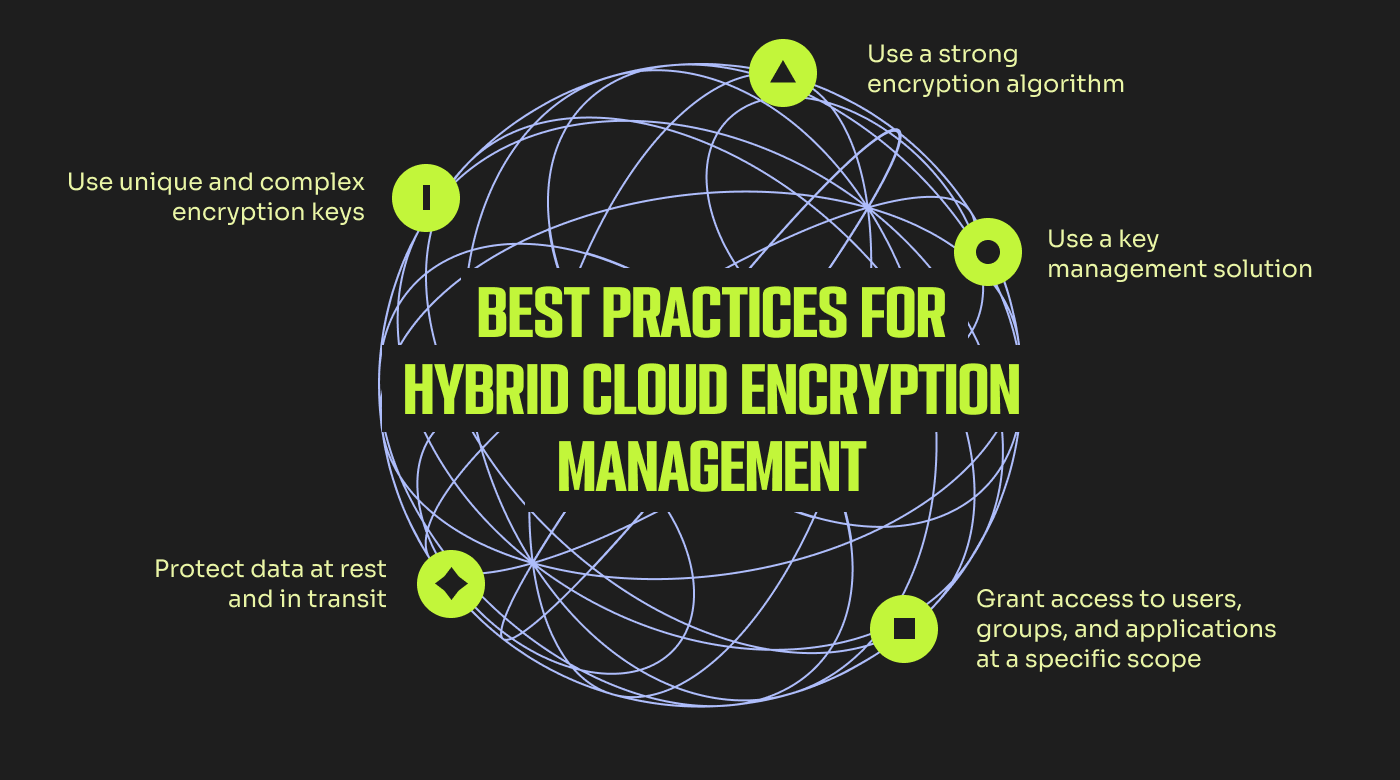
To effectively implement encryption, organizations should choose the appropriate encryption method based on data sensitivity. Options include symmetric, asymmetric, or homomorphic encryption, each suited for different use cases.
Segmentation
Segmentation is another critical best practice in hybrid cloud security. It involves dividing networks or resources into isolated segments to reduce the attack surface and prevent lateral movement by attackers.
It offers improved performance, enhanced compliance, and increased network resilience. Organizations can choose from various segmentation models, such as network segmentation or application segmentation, depending on their specific requirements and complexity.
Implementing segmentation typically involves:
- Defining the segmentation model
- Setting up secure network boundaries
- Implementing appropriate access controls and policies for each segment
This guarantees that resources are appropriately isolated and that security measures are applied per each segment's requirements.
Is Hybrid Cloud Right for You?
As discussed, hybrid cloud offers the unique benefit of combining the security and control of a private cloud with the efficiency and scalability of a public cloud.
However, before deciding to switch to a hybrid cloud, several important factors must be considered.
Migration
In the long run, many organizations find cost savings after cloud migration thanks to increased efficiency. However, there is a considerable up-front cost in both time and effort to undertake the cloud transformation.
Compatibility challenges can arise with vendors, strategy and planning take time, data migration requires technical expertise, and teams may need to retrain for new workflows and toolsets. Downtime and additional operational expenses can add up, too.
Integration
To deploy cloud resources with existing resources, you’ll need to integrate the discrete components of the system. You can employ various means to connect data and applications smoothly across different platforms, including Virtual Private Networks (VPNs), gateways, and Application Programming Interfaces (APIs).
Ideally, you’ll be able to customize your cloud configuration to best meet your needs for synchronization across network locations, manage data, and deploy applications efficiently.
Speed
Thanks to optimized infrastructure using edge computing techniques, speed can often be enhanced through the hybrid cloud. By bringing computation and data storage closer to where it's needed - whether it's devices, sensors, or users - latency can be significantly reduced. This improvement in response time ultimately enhances the user experience.
But depending on your business operations, end-user performance may be more or less of a priority. In some cases, it may not be efficient to migrate on-premise applications to the cloud if they are performance- and data-intensive and used primarily in-house.
Complexity
While there are several advantages to the hybrid cloud setup, these come with the challenges of increased complexity, as you must manage different platforms and technologies within your IT environment.
Takeaways
Hybrid cloud computing offers an incredible opportunity for businesses to leverage the strengths of both public and private clouds, including optimizing costs, increasing agility and scalability, achieving better performance, and reducing latency.
Companies can achieve greater flexibility and efficiency by adopting the hybrid cloud solution, but they must be mindful of the challenges and risks involved. It would be naive to imagine a transformation of this size could be completed without obstacles to overcome and the investment of time and energy. However, you can minimize the challenges and make the most of this innovative approach by following best practices.
There are endless cloud resources to learn more, including podcasts about cloud computing, conferences, and courses.
You can subscribe to The CTO Club newsletter to stay updated on the future of hybrid cloud and the latest tools to build SaaS teams and systems that scale.

